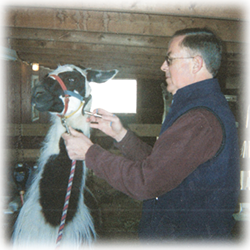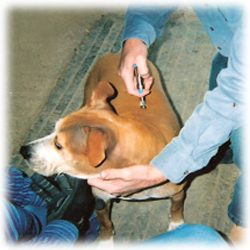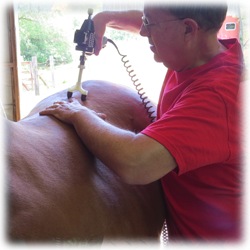


What is Veterinary Orthopedic Manipulation (VOM)?
Veterinary Orthopedic Manipulation is a healing technology that locates areas of the animal’s nervous system that has fallen out of communication, and re-establishes neuronal communication and thus induces healing.
VOM is singularly the most simple, effective and safe healing modality in veterinary care to date. For the VOM practitioner it is an exquisitely objective, fast and easy to apply technology that takes a minimum of time to master and whose scope of application appears has yet to be fully appreciated.
How it works
All chiropractic modalities have one thing in common in that they all reduce the vertebral subluxation complex by providing motion or force to the fixated or subluxated joint. Spinal or Injury = Neuronal Subluxation Syndrome = Pathological Read Neuronal subluxation + Motion (force) = Subluxation Reduced So if you put motion into a joint that is associated with a neuronal subluxation sign, (a pathological read), you reduce the subluxation. It is that simple.
All the various types of chiropractic techniques have this motion or force into the subluxated joint in common. VOM delivers its force with a hand-held device called a spinal accelerometer. It looks a bit like a spring-loaded doorstop. Your VOM practitioner has extensive references covering the research investigating the principles portrayed above and can provide them upon request. These references are replete in chiropractic journals.
Why VOM is so Successful
Because it locates all the neuronal subluxations present in the animal regardless of whether clinical listings are present and reduces them and confirms their reduction. Inherent in the VOM Technology is a built-in rescheduling protocol that inserts the patient on a self-regulating readjustment interval. Again, an easy, objective science.
What can VOM Treat?
- Acute and non-acute lameness
- Progressive lameness
- Hip Dysplasia-like syndromes
- IV disc disease
- Progressive myelopathies, (down in the rears dogs)
- Urinary and fecal incontinence
- Unilateral lameness
- Wobbler’s Disease
- Diseases of the knee
- Esophageal disease
- Increased or decreased GI mobility disease
- Digestive disorders
- Performance problems
- Behavioral problems
- Agility dysfunction
- Endocrine disease
For more information click here for full details.